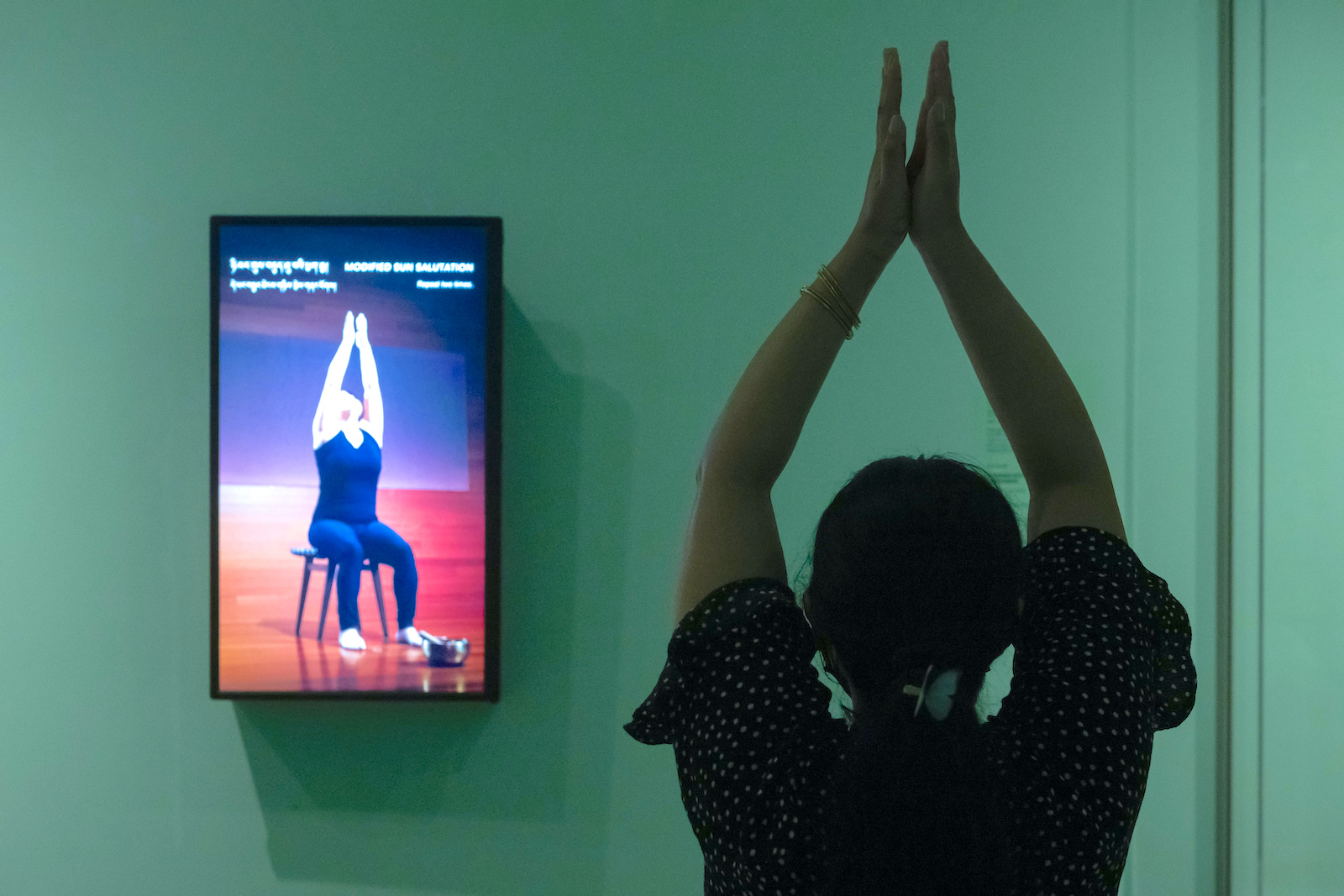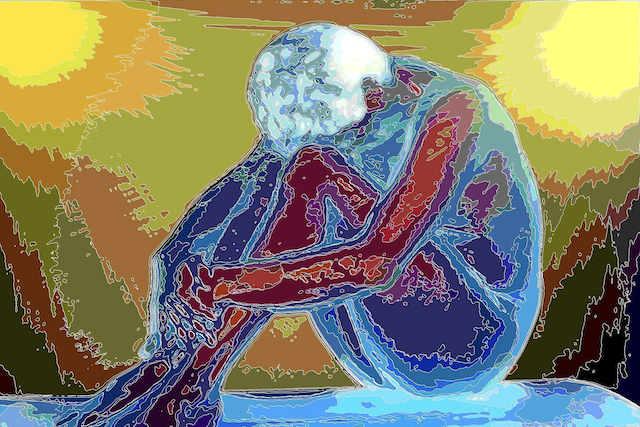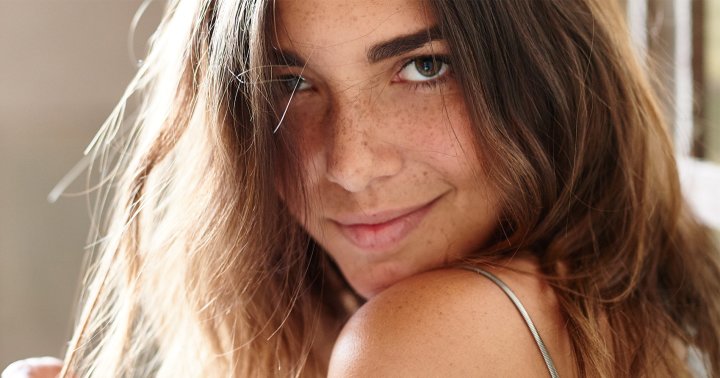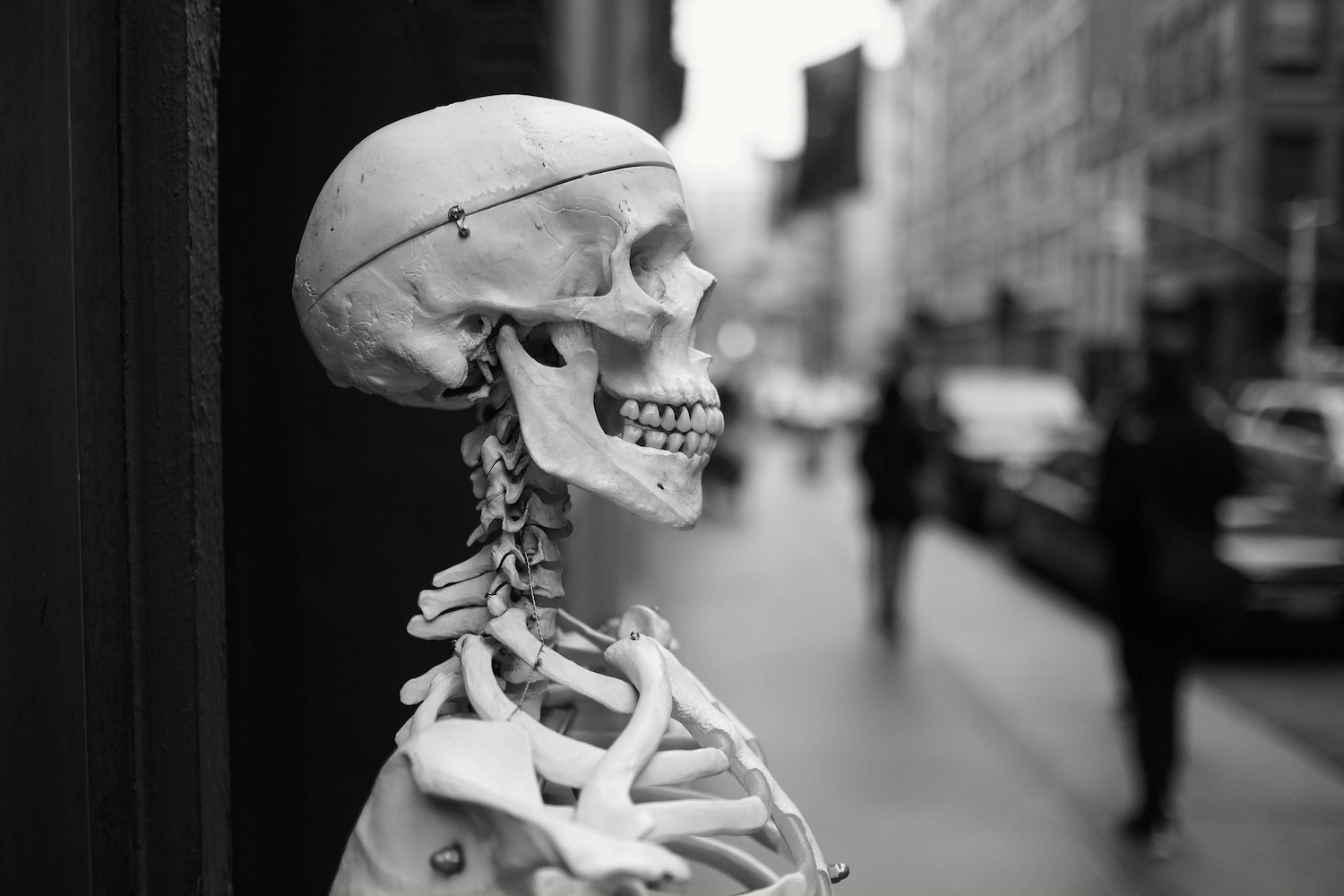The Work of Bodhisattvas
Healing Practices: Stories from Himalayan Americans opens at the Rubin Museum The post The Work of Bodhisattvas appeared first on Tricycle: The Buddhist Review.

 A video of a yoga instructor demonstrates a sun-salutation routine at the Rubin's new exhibit, Healing Practices: Stories from Himalayan Americans. | Photo by Filip Wolak, courtesy of the Rubin Museum of Art
A video of a yoga instructor demonstrates a sun-salutation routine at the Rubin's new exhibit, Healing Practices: Stories from Himalayan Americans. | Photo by Filip Wolak, courtesy of the Rubin Museum of ArtIn a first for New York City’s Rubin Museum of Art, a new exhibit draws upon a collaboration with a Community Advisory Group consisting of Himalayan-American medical professionals, artists, educators, and others who work “at the intersection of art, healing, and activism.” Healing Practices: Stories from Himalayan Americans, which opened on March 18 and will be on view until January 16, 2023, explores the power of Tibetan medicine, both in its traditional context and in relation to the ongoing COVID-19 pandemic.
One of the goals of Healing Practices is to prompt viewers to reflect for themselves on what it means to heal. To this end, an interactive wall installation asks, “How does healing begin?” and encourages viewers to answer by writing, or drawing, on provided index cards and displaying them on the wall. The array of answers on display when I visited ranged from the metaphysical (“Know ourselves profoundly,” “Listen and you will be heard”) to the practical (“Eat food you like, so you don’t get grumpy,” written in what appears to be a child’s handwriting.)
In a press release for the exhibit, Michelle Bennett-Simorella, the museum’s Director of Curatorial Administration and Collections, writes:
Healing is about overcoming discomfort or pain and rebalancing the mind and body to equilibrium. It can be, at times, a seemingly insurmountable process during which we gain a better understanding of ourselves, others, and the world around us. This exhibition explores what the practices of healing in Tibetan Buddhism have to offer to individuals and society, as well as the meaningful ways people move forward after a collective experience of trauma.
Healing Practices draws from over twenty-five objects from the museum’s collection, many of which are accompanied by audio commentaries from members of the Community Advisory Group. Contemporary paintings of healing rituals and objects complement traditional thangkas (Tibetan paintings) and images of traditional deities known to bring well-being and longevity.
An acrylic-on-linen painting by Karma Phuntsok entitled Dorje and Dilbu juxtaposes the traditional ritual objects of a vajra and bell with an abstracted, pop-art-like background. On a video screen nearby, a yoga instructor demonstrates a sun-salutation routine and encourages viewers to join in. Another video installation features an interview with two students, aged nine and twelve, who reflect on the community meditation classes they attended during the height of the pandemic. A wide array of material objects used to promote healing, including turquoise prayer beads, a protective astrological chart, and intricately decorated amulets, are also on display.
 Protective Astrological Chart; Tibet; late 18th or early 19th century; pigments on cloth; Rubin Museum of Art, gift of Namkha Dorjee/ Bodhicitta Art.
Protective Astrological Chart; Tibet; late 18th or early 19th century; pigments on cloth; Rubin Museum of Art, gift of Namkha Dorjee/ Bodhicitta Art.One significant tool for healing within the Tibetan Buddhist tradition is, as Bennett-Simorella writes, the contemplation of Buddhist artworks “for their symbolic nature, and for visual guidance around practices that prevent, heal, and aid in longevity.” This practice is known to “support improvements in psycho-physical energy.”
The New York-based Buddhist teacher Khenpo Pema Wangdak, a member of the exhibit’s Community Advisory Board, reflects in his audio commentary that to contemplate an image of the Buddha is “in essence, to impress the Buddha on our consciousness. Free from the crude and tangible experiences of life, mental images of the Buddha create a form of pure joy, inspiration, gratitude, compassion, kindness, generosity, and patience.” Through repeated visualization, practitioners come to realize that “the images of the Buddha and our mind, in essence, mirror each other.”
Out of the many different buddhas and associated Buddha fields in Buddhist cosmology, the Medicine Buddha, or Bhaisajyaguru, is one of the most prominent deities associated with healing. Bhaishajyaguru is known to be the patron of doctors and healers; rays of light emanate from his blue body, “illuminating the world so that practitioners will never be in darkness.” Healing Practices features three depictions of Bhaisajyaguru. Two traditional thangkas, both dating from 18th-19th century Tibet, render the Medicine Buddha in vivid pigment on brocade cloth. The second utilizes a geometric mandala form, traditionally used to enhance contemplation in the viewer.
An audio commentary from Tshering Yangzom, a Bhutanese community development professional, accompanies a contemporary, digitally-rendered image of Bhaisajyaguru. In it, Yangzom reflects on watching social media videos of Je Khempo, the chief Abbot of Bhutan, “carrying out rituals and prayers for the wellbeing of all sentient beings on earth” during the earliest days of the pandemic.
Yangzom expresses that one of the most painful parts of the pandemic has been the separation from members of his immediate family, who still live in Bhutan. He remembers receiving digital images of Bhaisajyaguru from Bhutan. “To this day,” he says, “I still have the photo of the Medicine Buddha saved as a wallpaper on my phone. And it helps me remind me not only to pray for him for the wellbeing of everyone during these difficult times, but also helps me reconnect and remind me of my cultural and religious roots.”
Another Buddha central to Tibetan healing practices is the deity Tara, who is generally peaceful and always appears in female form. There are close to two hundred different meditational forms of the enlightened Buddha Tara, but four works within Healing Practices demonstrate a selection of her likenesses.
 White Tara with Long Life Deities; Tibet; 19th century; pigments on cloth; Rubin Museum of Art, gift of the Shelley & Donald Rubin Foundation | Photo by Filip Wolak
White Tara with Long Life Deities; Tibet; 19th century; pigments on cloth; Rubin Museum of Art, gift of the Shelley & Donald Rubin Foundation | Photo by Filip WolakOne 19th-century Tibetan thangka pictures her as White Tara, the form in which she is known to bring longevity. White Tara also appears in three-dimensional form in a 15th-century brass sculpture. In a silver sculpture from the same era, inlaid with semi-precious stones, the deity manifests as Green Tara, her most common manifestation.
Another painting demonstrates Tara’s ability to protect from the Eight Fears: water, lions, fire, snakes, elephants, thieves, false imprisonment, and ghosts. As scholar Jeff Watt writes, these fears may be understood literally, “though they also point to inner and secret meanings,” in keeping with Tantric Buddhism’s interpretive model of “outer, inner, and secret” meaning.
An audio commentary from Community Advisory Board member Geshe Tenley demonstrates a profound personal connection with White Tara. Tenley shares that he began working with White Tara as a daily practice when he was eleven years old. During the last two years of the COVID-19 pandemic he has prayed to the deity for at least an hour everyday, along with community members at the residential Kurukulla Center for Tibetan Studies in Boston.
Tenley also shares how he recently experienced a near-fatal car accident, which left him in a coma for two days and in an Intensive Care Unit for a week. But he made a strikingly quick recovery, which surprised doctors: “They asked me, what kind of meditation are you doing?” Tenley says he owes his healing in part to his relationship with White Tara.
Other audio narratives discuss the role of medical professionals during the COVID-19 pandemic. In an audio commentary accompanying a painting of the thousand-armed, eleven-faced, all-seeing Lord Avalokitesvara, registered nurse Pema Dorjee says: “This art reminds me of the work of nurses and healthcare workers who selflessly act to save dying patients every day in the hospital.”
She says that the work of nurses and doctors, especially during the ongoing COVID-19 pandemic, is “surely the work of Bodhisattvas.”

Get Daily Dharma in your email
Start your day with a fresh perspective

Explore timeless teachings through modern methods.
With Stephen Batchelor, Sharon Salzberg, Andrew Olendzki, and more
![]()
Thank you for subscribing to Tricycle! As a nonprofit, we depend on readers like you to keep Buddhist teachings and practices widely available.
This article is only for Subscribers!
Subscribe now to read this article and get immediate access to everything else.
Already a subscriber? Log in.

 Troov
Troov 































